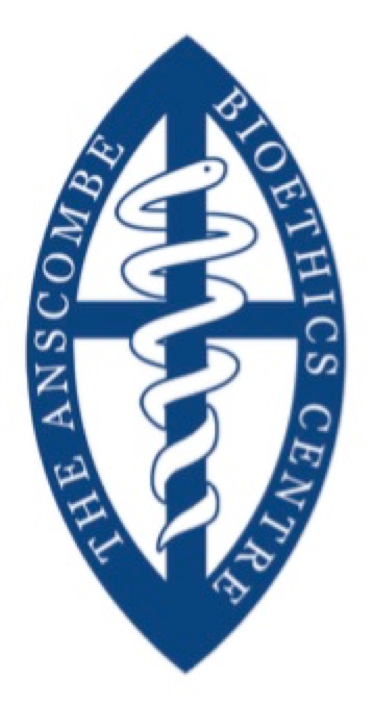Reproduced with permission of the Anscombe Bioethics Centre www.bioethics.org.uk


The Anscombe Bioethics Centre
COVID-19 Briefing Paper 2
27 April 2020
COVID-19 Vaccines and Use of Foetal Cell-lines
A COVID-19 vaccine would be deeply welcome in principle: it would save countless lives across the world. As with other drugs, ethical questions can arise with such a vaccine’s development and use. Such questions can concern risks, whether to research volunteers or to the public when the vaccine is released. This briefing, however, looks at another question: the use of foetal cell-lines to create some – not all – COVID-19 vaccines currently under research. It examines whether such use by researchers is permissible when the cell-lines were originally created from tissue sourced from abortions, and whether accepting the vaccine makes one complicit in the abortion and harvesting of foetal tissue.
Vaccines are normally, though not always,1 produced in living cells. While they can be generated (as with some COVID-19 vaccines in the making) in cells derived from ethically uncontentious sources such as insects,2 tobacco plants,3 and hamster ovaries,4 they can also be produced in cell-lines made from tissue derived from an aborted unborn child. One such cell- line used in COVID-19 vaccine research (including a project of the University of Oxford5) is the HEK 293 cell-line modified from tissue taken from the kidney of an unborn child aborted probably in 1972, while another is the PER C6 cell-line from the retinal tissue of an 18-week baby aborted in 1985.
Responsibilities of vaccine manufacturers and health officials
Simply as a matter of fact, use of such cell-lines in COVID-19 vaccine production is likely to create problems of conscience for some of those to whom the vaccine is offered, and who become aware of its history. I have written elsewhere about the need for drug companies and health officials6 to take seriously the likelihood of conscientious objection of this kind.
Conscientious objection on the part of potential vaccine recipients creates its own ethical demands for decision-makers, including those who do not themselves share the objection in question. Such concerns should be viewed with particular sympathy in the area of abortion, bearing in mind that even those who do not object to all abortions may well object to the particular abortion from which a foetal cell-line was derived. For example, many object to late- term abortions for social reasons, like the abortion producing the PER C6 cell-line.
Responsibilities of scientists and vaccine recipients
When considering questions of complicity with unjust or wrongful actions, the exact connection between one’s own and others’ actions must be examined, including both the immediate and the longer-term intentions of oneself and other people. There is a chain of actions from the original abortion and harvesting of foetal tissue, to the creation of a foetal cell-line, to its use in the creation of a vaccine, to the vaccine’s marketing and purchase, and offer to and use by members of the public. Is complicity involved at every stage, and if so, to what extent? The links in the chain must be separately considered, since objections to links earlier in the chain may not be present in undiminished force further down the chain.
Foetal tissue harvesting and creation of cell-lines
For those who are clear that abortion is the unjust killing of a young human being with full moral worth, it should also be clear that the original harvesting of foetal tissue was deeply immoral, given the messages it conveyed and the close collaboration with the abortionist it will have involved. In the language of ‘cooperation in evil’, this was not ‘material’ (unintentional) cooperation, however illicit, with the abortion but was rather ‘formal’ (intentional) cooperation with the abortion or at very least, with preparations for it.
To negotiate with an abortionist before the abortion to collect foetal remains involves a sharing of intentions between oneself and the abortionist concerning wrongful preparation for the abortion and its immediate aftermath: agreeing on details for pickup, getting advance consent from the woman and so on. Indeed, abortions have been carried out, including in the recent past, by means intended to facilitate the harvesting of fresh foetal tissue, making the tissue collector deeply complicit, not only in preparatory planning but in the very act of abortion. More generally, tissue collection cannot simply be thought of as an enterprise completely subsequent to and separate from abortion. In practice, it involves sharing plans for the abortion as well as sending out a complicit message about it.
In the case of an adult victim of homicide – say, a political prisoner executed by an oppressive regime – no reputable company or researcher would negotiate with the regime concerning the collection of the body for a research project, much less make arrangements for a method of execution that enables the harvesting of usable tissue. Such arrangements might well encourage future killings and/or provide those responsible with a false consolation which could obstruct any true remorse for what they have done. Knowing that tissue harvested could be used to save lives could even contribute, before the event, to preventing a change of a heart by someone conflicted about a planned taking of life. A woman who is ambivalent about her abortion – as many women seeking abortions are ambivalent7 – may be less likely to change her mind if she has already given permission for the use of tissue from her baby, which may seem to her in some way to legitimise her action. After the event, the knowledge that tissue was taken from her child with her consent will complicate her thoughts and feelings about the abortion: any grief, pain and guilt she experiences may be even harder to process and resolve. In any event, her own agreement that tissue be harvested is no more acceptable than that of the abortionist seeking her consent: both she and the abortionist, in agreeing on harvesting, are wrongly preparing for the abortion that involves or precedes harvesting.
From the perspective of the cell-line creator, it should be noted that the mere use of a go- between – a tissue bank or tissue procurement company – cannot sanitise the close complicity involved in obtaining and using foetal tissue. By analogy, if property is obtained through violent robbery, the fact it is obtained via a ‘receiver of stolen goods’, not the robber himself, is not enough to legitimate it: the connection is scandalously close even if the transaction is not (as it may be) pre-arranged.
Use of cell-lines in vaccine production
What should we say about the vaccine researcher using a cell-line already created, perhaps many years ago, from tissue derived from an abortion? We should begin by remembering that we benefit in many ways from past injustices and crimes. We walk in Rome on paving laid by slaves;8 we live in countries that our ancestors unjustly invaded; we buy in the second-hand market items which, though now untraceable, were almost certainly stolen at some time in the past. The more pairs of hands that separate us from the original wrongdoers, and the less we are part of an organised system, the less scandalous the messages we send out and the more likely it is that our actions are defensible. However, these actions are, conversely, less likely to be defensible if the wrongs in question, as with abortion and foetal tissue harvesting, not only continue to the present day, but continue with some degree of social sanction.
Use of existing foetal cell-lines is certainly a serious moral issue, even if such use is not as obviously objectionable as receiving foetal tissue from an abortionist or go-between. Such cell- lines, including very old cell-lines, often pass freely from laboratory to laboratory. Many scientists will not focus on, or perhaps even know, the provenance of very old cell-lines until these become a matter of controversy. That said, when controversy develops, it is indeed possible that use of foetal cell-lines could convey a message that the scientist accepts or is indifferent to abortion and foetal tissue harvesting – even if the scientist is in fact opposed to both. This in turn could involve ‘material’ (unintentional) encouragement of future harvesting of foetal tissue or early human embryonic cells: a scenario significantly more likely, however, if a scientist is using recently-created cell-lines of more ‘visible’ origin.
One scientist who formerly used an embryonic stem cell-line obtained from another institution led his laboratory colleagues to conclude that the end (scientific discoveries from embryonic stem cell research) must justify the means (destruction of IVF embryos).9 In the case of abortion- derived cell-lines, it may be unlikely that the ‘West’ will change their protocols from use of older, well characterised and still functional foetal cell-lines to replace them with unknown, recently created (and correspondingly more scandalous) foetal cell-lines – such as the Chinese Walvax2 cell-line created from an unborn child delivered by ‘water bag’ abortion.10 While cell- lines are not necessarily immortal, cell-lines already in existence throughout the world are likely to last for decades more. That said, cell-free methods as well as non-foetal cell-lines are used already and can be used in vaccine development, and methods will no doubt go on evolving.
Catholic responses
Concerns about use of foetal cell-lines in vaccine production are not limited to Christians or those of faith. They relate to a widely-shared concern to avoid complicity with unjust killing in the first place, and with the wrongful use of the bodies of those unjustly killed in the second. That said, such concerns are undoubtedly shared in particular by religious people – even if many people, whether religious or otherwise, are still unaware of the origin of some vaccines.
The CDF document Dignitas Personae,11 commenting on the use of foetal and embryonic cell- lines, states that scientists have a duty to refuse the use of illicitly-produced material “even when there is no close connection between the researcher and the actions of those who performed the artificial fertilization or the abortion”. This duty, it claims, “springs from the necessity to remove oneself, within the area of one’s own research, from a gravely unjust legal situation and to affirm with clarity the value of human life.” The document makes these further observations:
“within this general picture there exist differing degrees of responsibility. Grave reasons may be morally proportionate to justify the use of such “biological material”. Thus, for example, danger to the health of children could permit parents to use a vaccine which was developed using cell lines of illicit origin, while keeping in mind that everyone has the duty to make known their disagreement and to ask that their healthcare system make other types of vaccines available. Moreover, in organizations where cell lines of illicit origin are being utilized, the responsibility of those who make the decision to use them is not the same as that of those who have no voice in such a decision.”
The requirements for scientists (in particular, principal investigators) in Dignitas Personae are certainly demanding, and there was some discussion by Catholic scientists of the implications for ongoing research when the document first appeared.12 Even if the scientist using the cell- line is at some remove from the original abortion and tissue harvesting and creation of the cell- line, since abortion and tissue harvesting continue with some degree of social endorsement, there may be a risk of appearing to condone such continuation by making use of existing cell- lines in one’s research.13 Against this, it can be argued that with very common, very old cell- lines, these are ‘invisible’ to scientists such that drawing attention to them may create scandalous messages that would otherwise be avoided. However, the issue may not remain so invisible with the appearance of newly-created embryonic or foetal cell-lines. It may be more difficult to protest against use of such new cell-lines for some particular purpose if older foetal cell-lines have been used routinely in one’s research. The use of such older cell-lines remains at very least morally problematic.
Boycotting foetally-produced COVID vaccines
Should COVID-19 vaccines be the subject of a boycott by potential recipients, if they were produced using foetal cell-lines? Boycotting a COVID-19 vaccine in the absence of an alternative is a serious action that should be carefully considered, because of its potentially grave risks both for the person and for others. These risks will in turn depend on such factors as the person’s state of health and family and work circumstances and the presence of the virus (or immunity to the virus) in the community in which he or she lives. To give just two examples, for health care professionals and those with vulnerable family members living with them, a boycott may be incompatible with retaining a role in health care, or living with/caring for the family member.
There is, however, a possibility that even if a COVID-19 vaccine is produced from a foetal cell- line – which may or may not eventuate – a non-foetally-produced alternative will come onto the market at a similar time, given that several are in development such as those mentioned earlier14 (just as non-foetally-produced vaccines are available for other diseases15). For those who can access the alternative without excessive difficulty (and their efforts should be assisted, not obstructed, by health authorities) the moral onus is certainly on the person to do this, as a witness to the value of human life and life-respecting research.
We should bear in mind that exercising a boycott need not imply that use of the boycotted product is intrinsically immoral; rather, boycotts are often rightly regarded simply as a means of achieving change by highlighting abuses. (For example, when South African fruit was boycotted during apartheid, this was not because boycotters were necessarily claiming it was intrinsically wrong to eat South African fruit.)
If an alternative is not reasonably available, some will decide, under protest, that they have grave reasons (in the words of Dignitas Personae) to accept a vaccine out of concern for their own health and the health of others they may infect. Such individuals should make their views on use of foetal cell-lines known to the health authorities, as Dignitas Personae urges, in the hope of raising awareness and helping to change the brutal culture in which abortion products are so widelyused. Informationonthevaccine’sproblematicorigincouldthusbeusefuleventothose who decide to accept the vaccine, as this will help them raise consciousness in decision-makers about the use of remote or (far worse), immediate products of abortion.
Even if there is no absolute duty to boycott vaccines produced via existing foetal cell-lines – this is a matter for individual conscience and there will often be weighty reasons against it – some will feel, whether rightly or wrongly, called to a boycott even if no alternative vaccine is available to them. Again: governments should seek to fund research on, and purchase, morally uncontentious vaccines, both to reward morally uncontentious research and to provide more citizens with vaccines they can in conscience accept, even with full background information. Internationally, it is very much to be hoped that morally uncontentious vaccines will be made widely available to all peoples of the world, both to fight the COVID-19 pandemic and to combat other threats to life and health.
Helen Watt
Senior Research Fellow
The Anscombe Bioethics Centre
The Macmillan Building, Pembroke College, St Aldate’s, Oxford OX1 1DW
tel: +44(0)7734964620
email: admin@bioethics.org.uk
website: www.bioethics.org.uk
Registered Charity No. 274327








